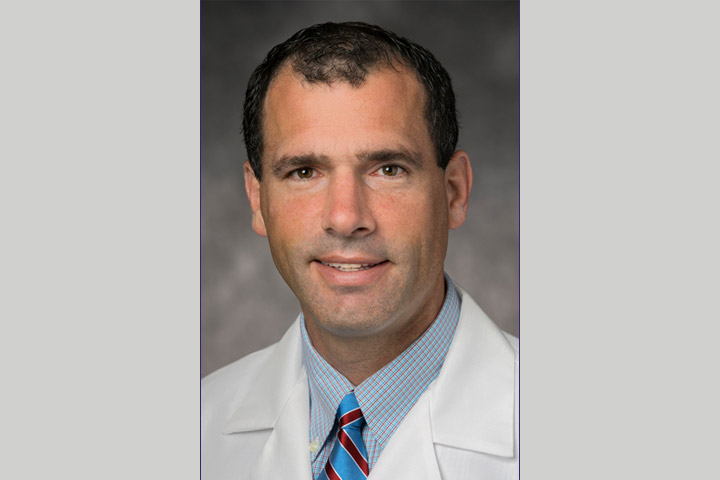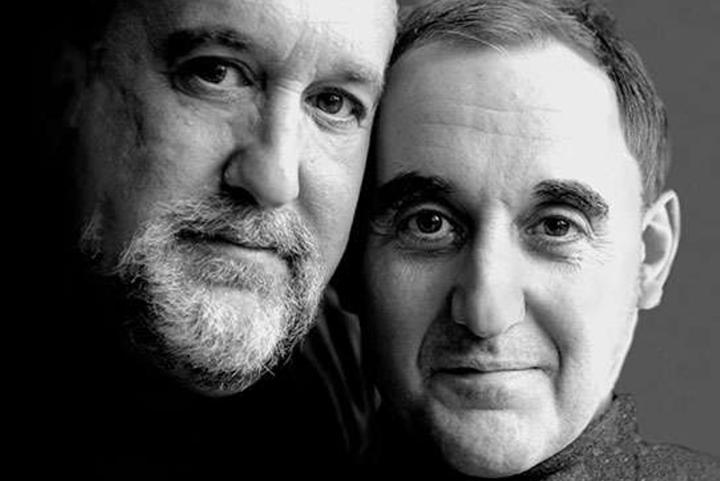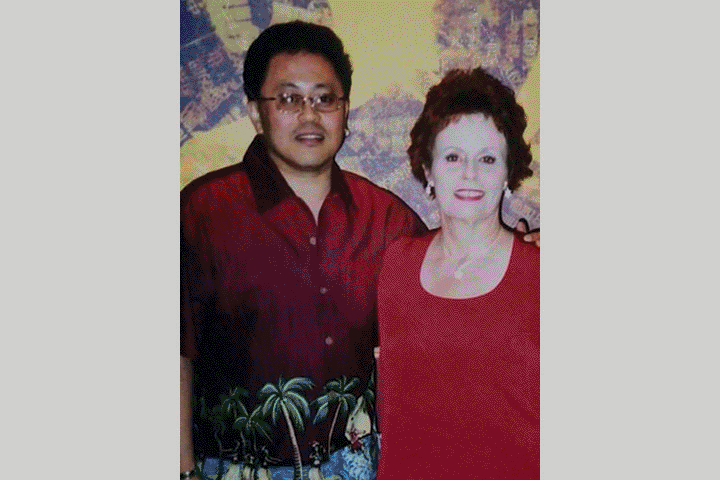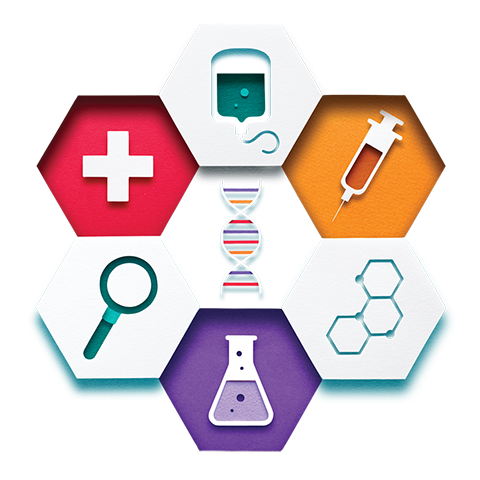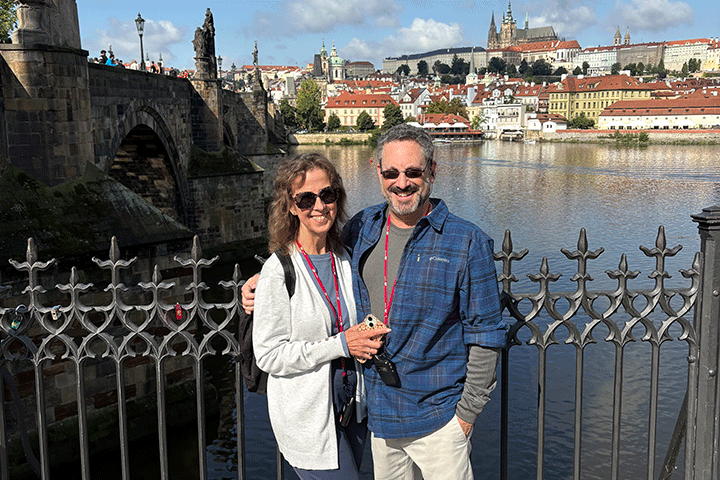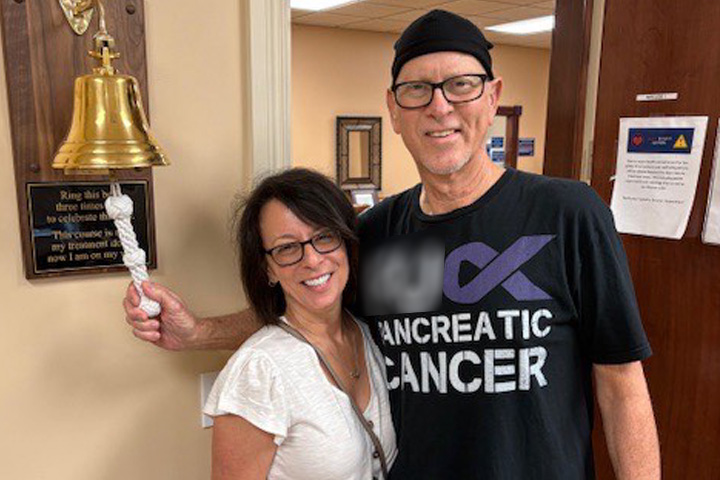The Bottom Line Is Optimism
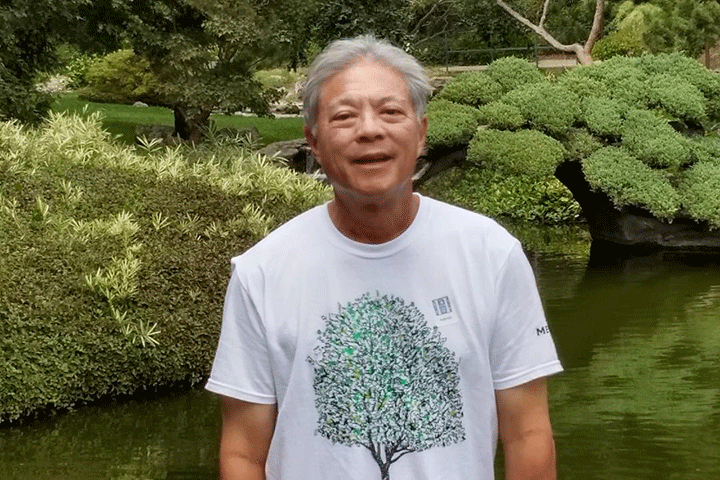
- Sore golfing wrist led to diagnosis
- Pancreatic cancer spread to my lymph nodes
- Successful treatment but recurrences in 2021 and 2023
- Having a community is key
I retired in 2014 from a wonderful career in the auto industry.
From there on out I was determined to spend my days traveling with my wife, taking the occasional consulting gig, enjoying life, and playing golf. Lots and lots of golf.
Old Age? Or a Tumor?
It was on one of those 18 holes that my life changed forever. In 2016 I started to feel a soreness in my wrist. My doctor initially diagnosed it as old age, but he did a blood test just to be sure. He called me back in shock. My bilirubin numbers were “nuts.” He wanted me to redo the blood test. So, I did. Once again, the numbers came back out of whack. My bilirubin numbers were 15 times the normal amount—so high that he was shocked I could stand upright at all. He told me to see a gastroenterologist immediately.
Several tests and an enteroscopy-type scan later, they found a tumor on the head of my pancreas. Were there other signs that I should have noticed? Not really. I had no stomach issues to speak of. I had been losing weight, but that was intentional. I had some jaundice, but it was slight. I also had some rashes on my back. Again, it wasn’t anything that had me worried. Looking back, they were slight indications that something wasn’t right.
Go See an Oncologist
The tumor was on the head of my pancreas, which meant it could be surgically removed. My surgeon at St. Joseph’s (Orange, California) was Dr. Lawrence Wagman (now with City of Hope, Duarte). He and I had hoped that a Whipple procedure would clear everything up. Unfortunately, after the surgery, we found out that the cancer had traveled to my lymph nodes. Dr. Wagman told me to see an oncologist. I didn’t know where to start. A friend of mine also had pancreatic cancer. He introduced me to the Pancreatic Cancer Action Network (PanCAN), and they helped me find Dr. Vincent Chung, at City of Hope in Duarte.
My oncologist prescribed six months of chemotherapy with capecitabine and gemcitabine, and eight radiation treatments. I had all the normal side effects—nausea, fatigue, vomiting, diarrhea. My treatments were administered every two weeks, and the sickness lasted about four or five days. It was a tough cycle, but I got through it.
Getting the Right Mindset
At the time that I was diagnosed, there was an eight percent survival rate of five years. From the start I told myself I would be in that eight percent. I did not think about or talk about the other 92 percent. I was able to stay optimistic by way of my family, friends, and community. My wife was an integral part of that. We never talked about anything other than hope.
That optimism came in handy in 2021 when I mysteriously started losing weight again. A biopsy indicated that pancreatic cancer was now in my lungs. I was classified stage IV now. They anticipated that I didn’t have much time left, but I kept my optimism. Instead of feeling down, I felt up. I started chemotherapy with Dr. Misagh Karimi (then with City of Hope, Newport Beach, now with UCI Health in Costa Mesa), taking Onivyde plus fluorouracil.
I decided to build a team for PanCAN’s 2022 PurpleStride fundraiser. I sent a note to 54 friends and family with the intention of raising $5,000 for the fundraiser. That would be $100 for every year that I had lived. If my friends could raise $2,500, I would contribute the rest.
While I was doing chemotherapy for this diagnosis, I was uplifted by the sound of my phone, which was constantly dinging from the contributions my friends, family, and even strangers had made to my fund. We raised more than $20,000 from 140 caring, giving, and selfless people! This taught me so many things. People genuinely love you and want you to be OK. Strangers care about you. They want you to succeed. This community support is what inspired me then and what keeps me alive today.
I stopped chemotherapy in 2023. That same year I had genetic testing and an ATM mutation was found. In 2025 they found signs of cancer activity again in the lungs, and I started immunotherapy, with Dr. Pashtoon Kasi at City of Hope. I had four treatments with ipilimumab and an immunotherapy booster with Keytruda.
All in all, eight and a half years after my diagnosis, I am still here.
Today
Today I am living as active a life as I can. My wife and I travel. We took up competitive bridge as a hobby. I walk as much as I can. Of course, I am still playing golf.
As a patient advocate, I have spoken at PurpleStride walks, appeared on Roberta Luna’s Living Hope podcast, and pressured my elected officials to devote more money to cancer research. There is more to do, and I am not done yet.
I also try to reach out as much as I can to other patients. I want them to have the same hope that I had. The great news is that the five-year survival rate has risen from eight percent to 13 percent. I tell patients to be part of the 13 percent. I remind them to focus on science and medicine, trust their own spiritual beliefs, and rely on community. If you have those things, you may be a lot happier during your journey. The bottom line is optimism.
